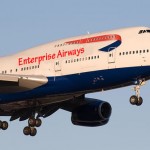Helle Hansen, the business analyst, recently interviewed Susan Nordberg, VP of customer services, regarding the details of how the business process is intended to flow.
Susan: “Whether a customer is making a reservation directly through one of our reservation agents or on our Web site, the process is the same. The customer first provides the cities that he or she wants to fly to, and the dates.”
Helle: “Can a customer request a one-way or a multi-city trip?”
Susan: “Yes, the trip can be one-way, a round-trip, or multi-city. We assume it is a round trip unless the customer indicates otherwise.”
Helle: “What happens next?”
Susan: “As I was saying, we then determine whether we provide service to the cities requested by the customer. If we do, we present all the available itineraries to the customer.”
Helle: “Do we check whether there is availability before presenting the list of possible flights?”
Susan: “Uh, no we don’t. I think that’s a deficiency in our process design, frankly. It is only after a customer selects one of the itineraries that we determine whether there is availability on the selected routes.”
Helle: “And isn’t that also a function of how many are in the customer’s party?
Susan: “Yes, we need to know whether the customer is making reservations for himself or for the entire family. If there is availability in the selected flights, we indicate that to the customer.”
Helle: “Are all these steps handled by Reservations?”
Susan: “Well. Other departments at Enterprise are responsible for various pieces of the reservations process. The Reservations department, of course, is responsible for coordinating these pieces and for concluding a reservation. For example, Flight Operations and Scheduling provides us the list of available flights that meet the customer’s requirements. Yield Management gives us the current fares for the selected flights. And the Frequent Flyer Program group that’s in my department verifies the account status of the customer.”
Helle: “Tell me how frequent flyer information is used.”
Susan: “First of all, if the customer is a member of our frequent flyer program, we note that in the reservation. Second, if the customer has achieved “Flying Falcon” status, then we give the customer and members of his or her party priority seating. By that I mean that they will get seats further forWerner in the aircraft, as long as they are in the same class of service, and they are available.”
Helle: “So if I understand correctly, if seats are available then we go ahead and make seat assignments?”
Susan: “Yes, we make provisional seat assignments prior to ticketing. As you know, once we reserve seats, they will be held for 24 hours unless they are ticketed before then.”
Helle: “If the customer agrees to the itineraries and the fare, then what is the last thing that is done in the reservation process?”
Susan: “We provide the customer a reservation number and internally record the provisional reservation.”

